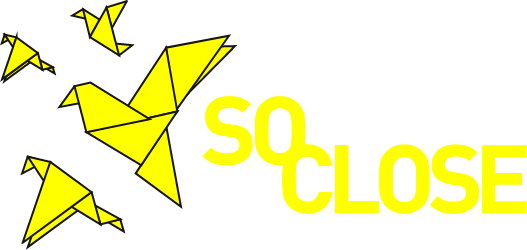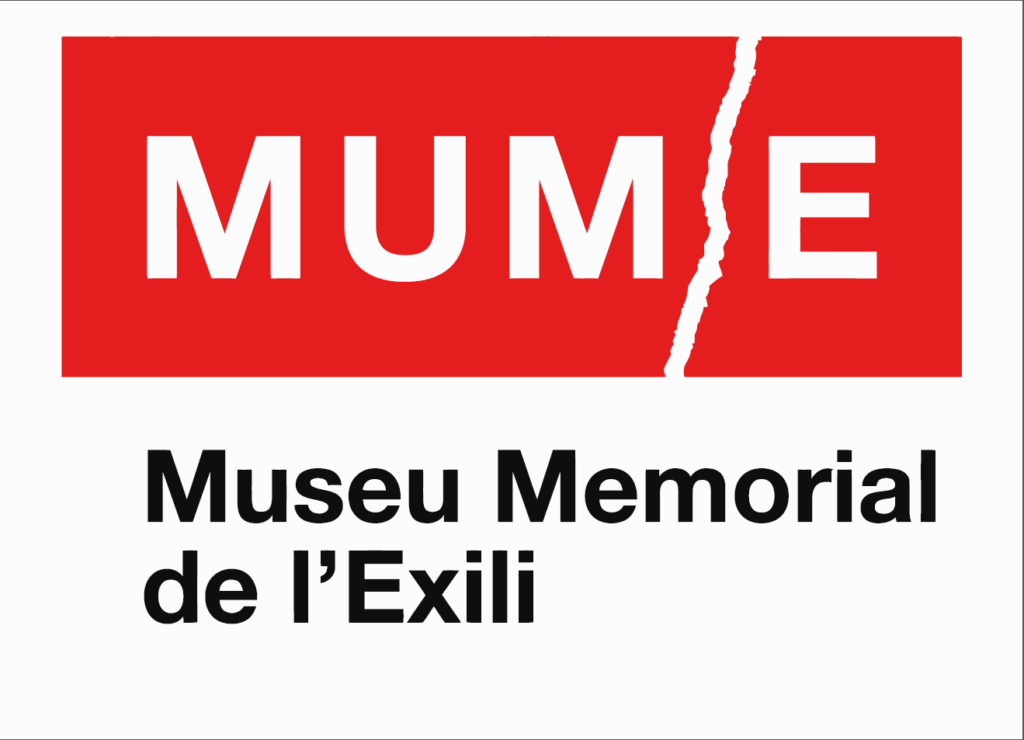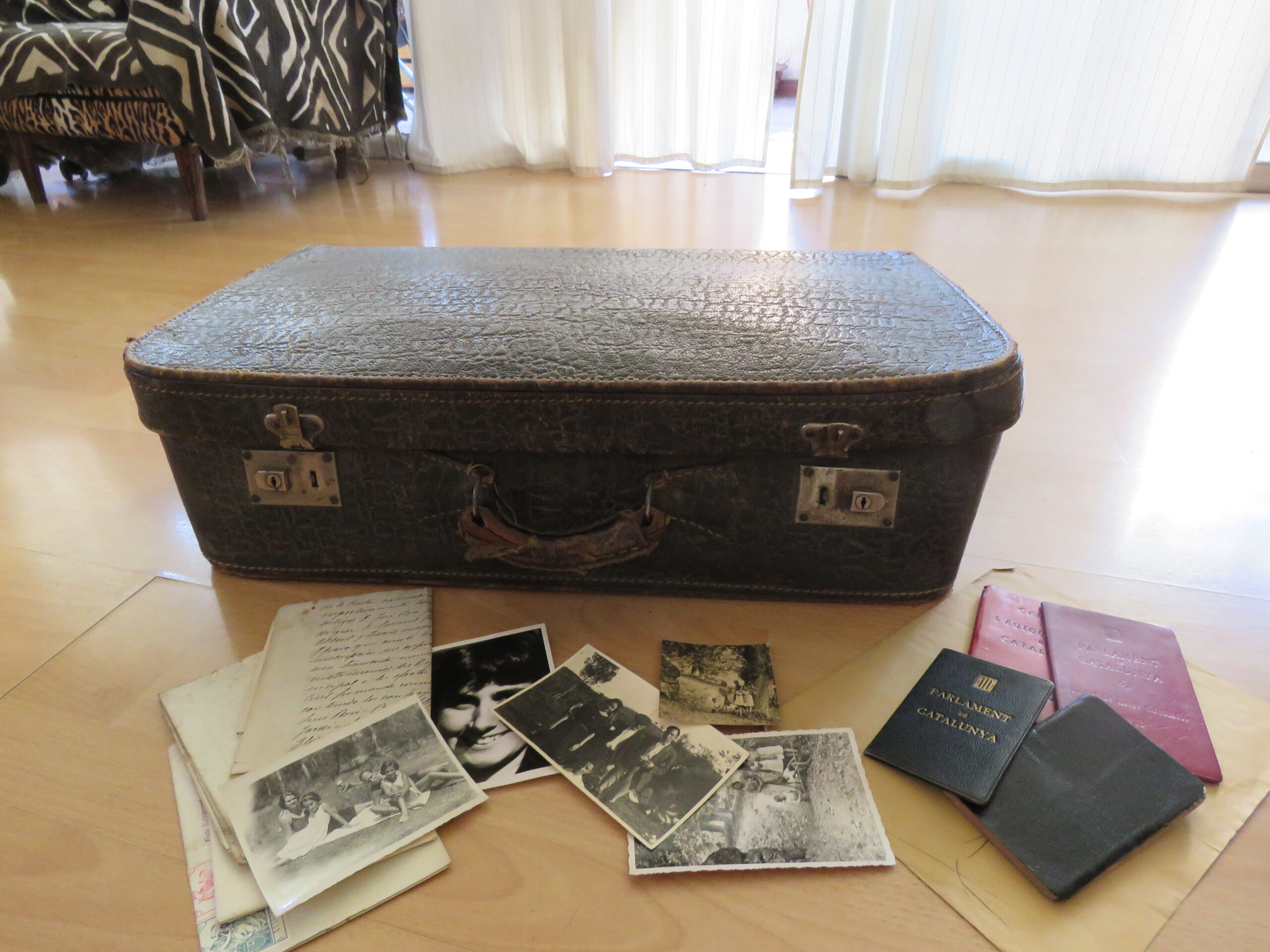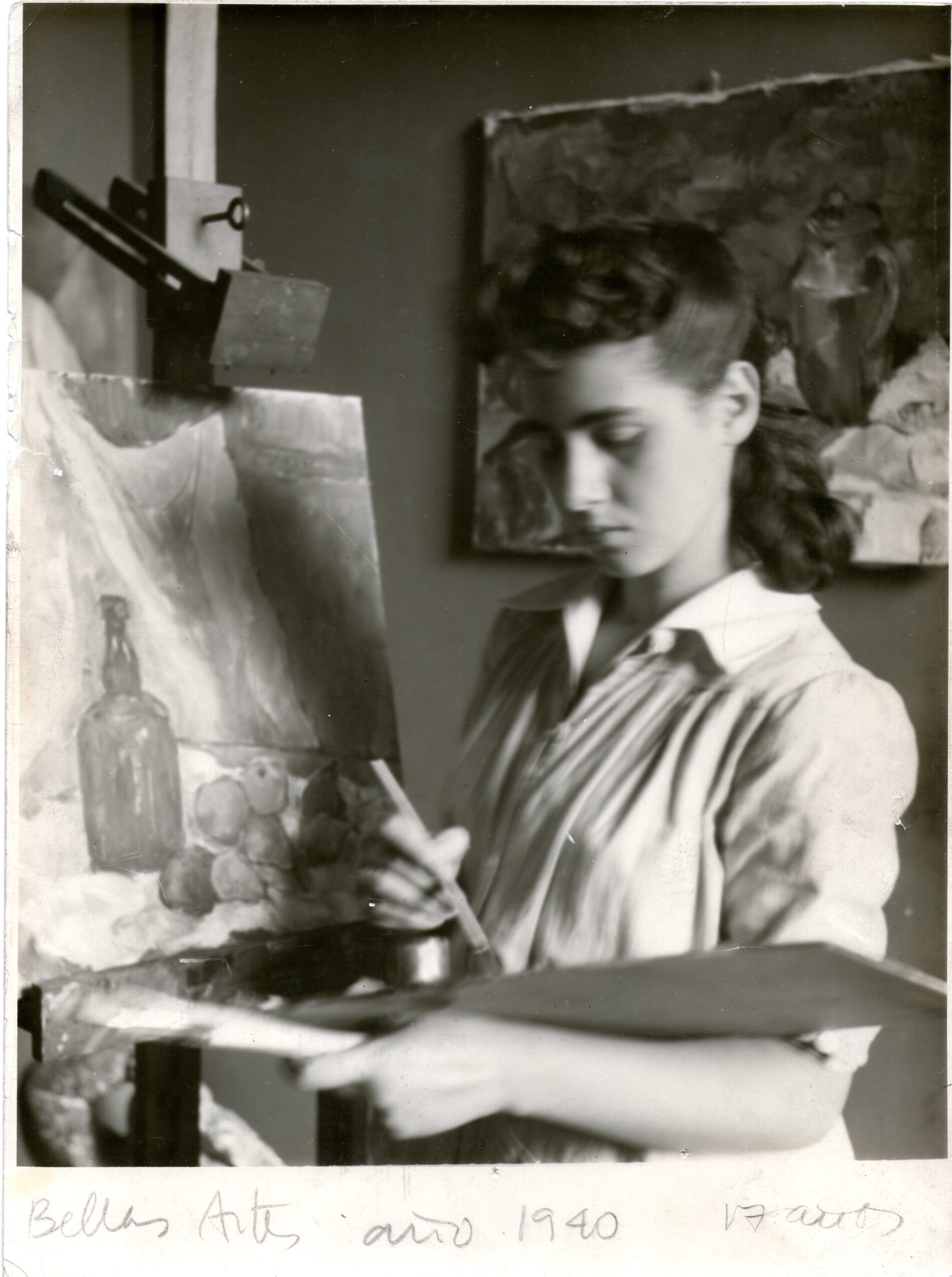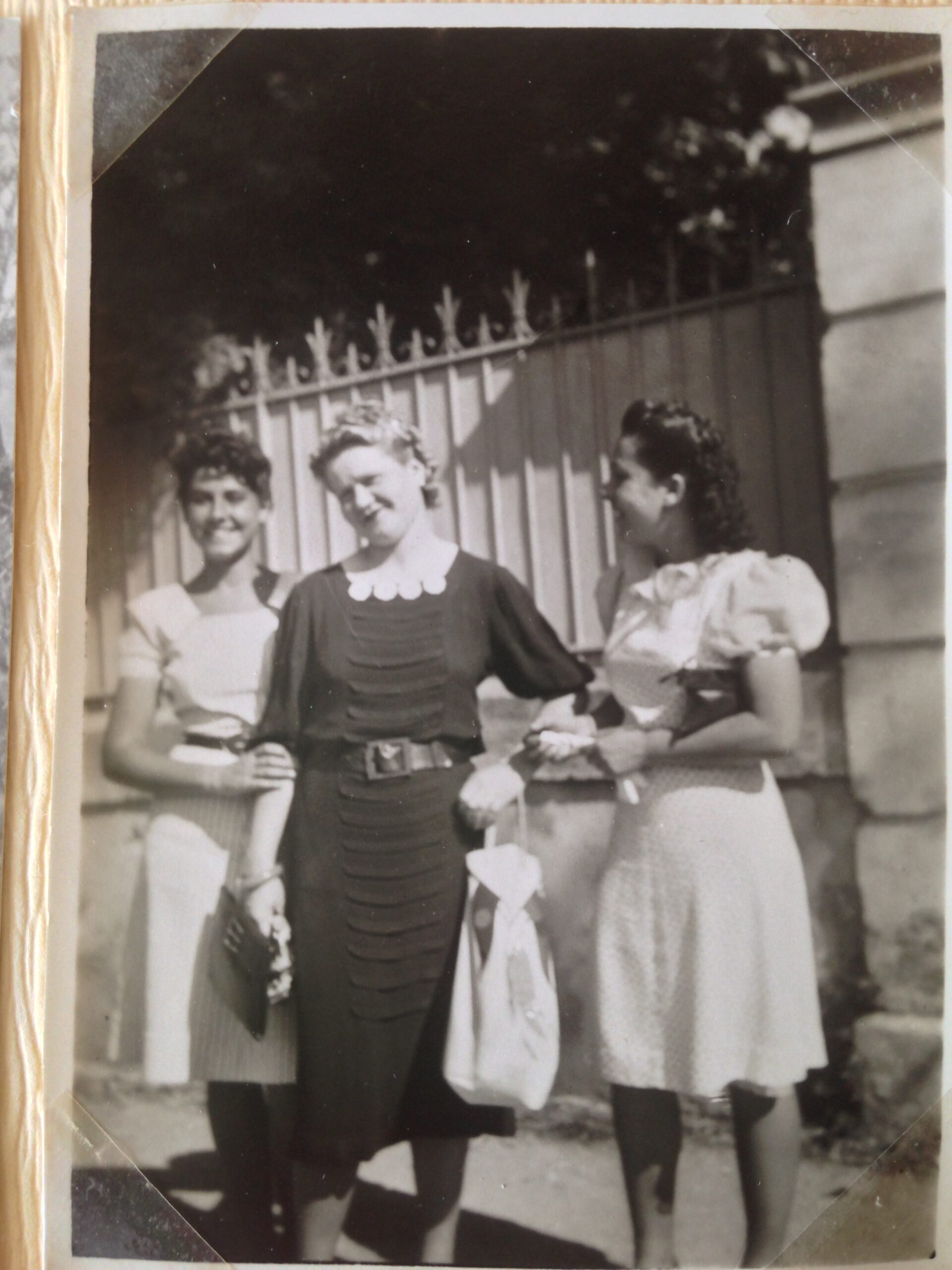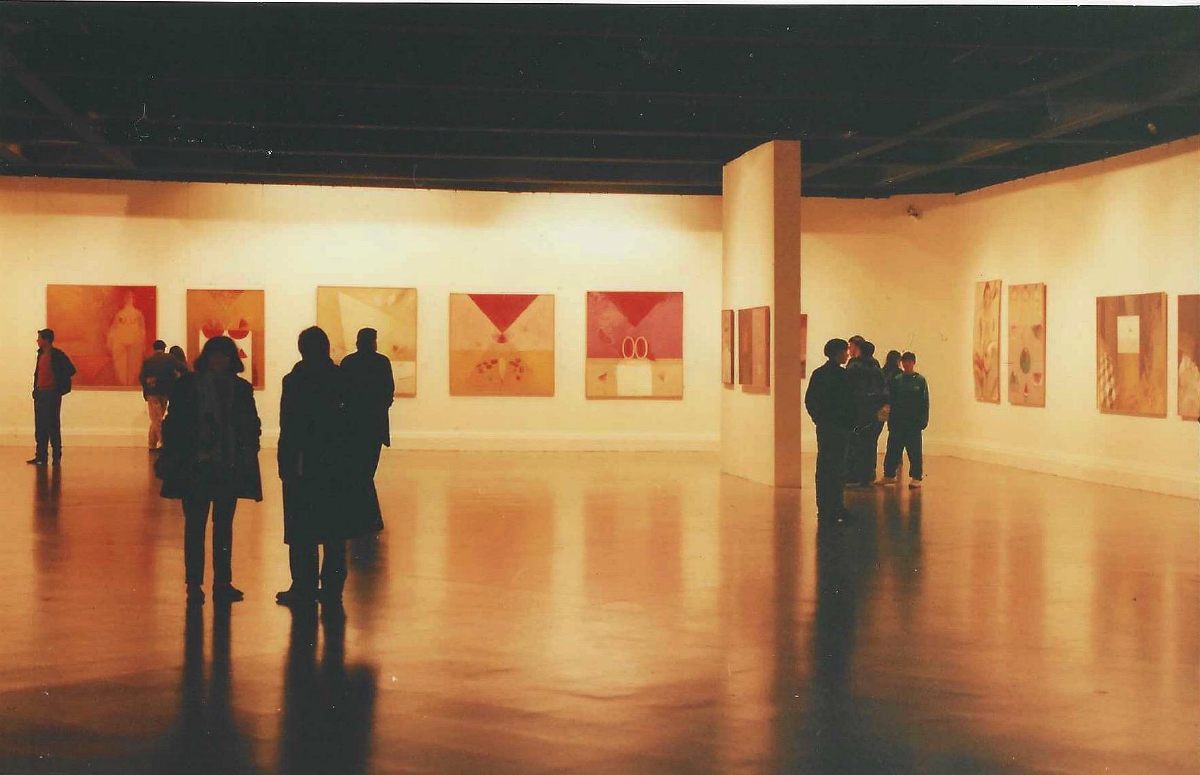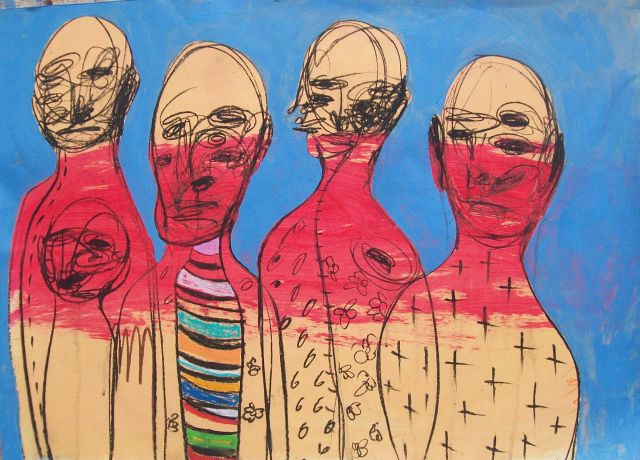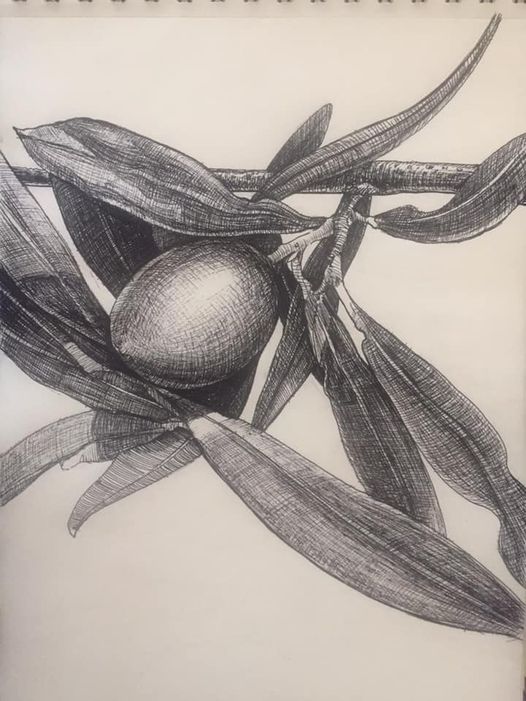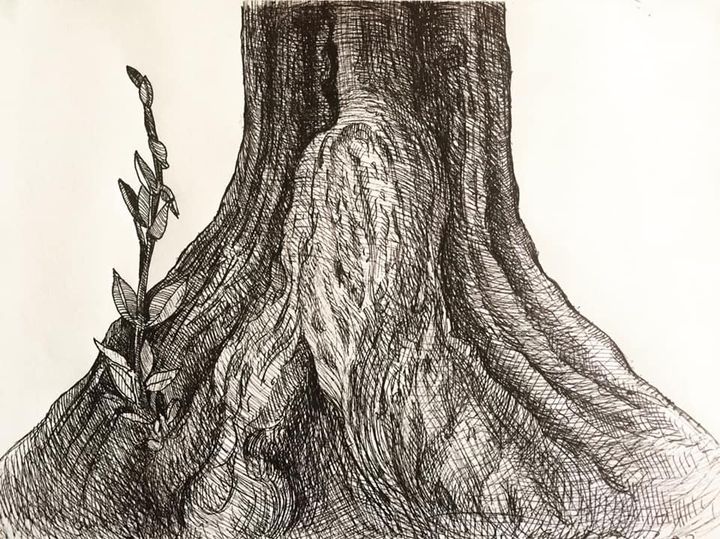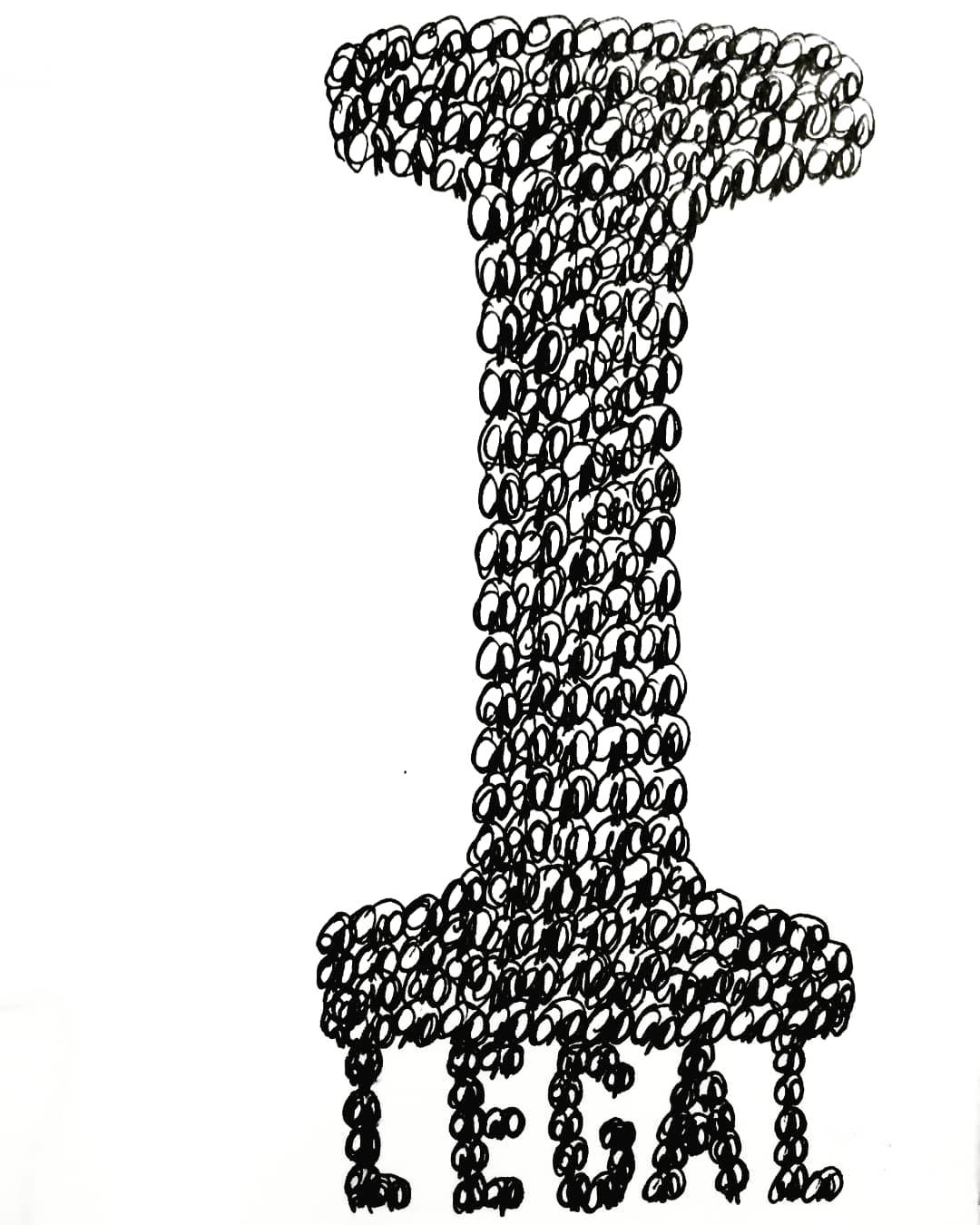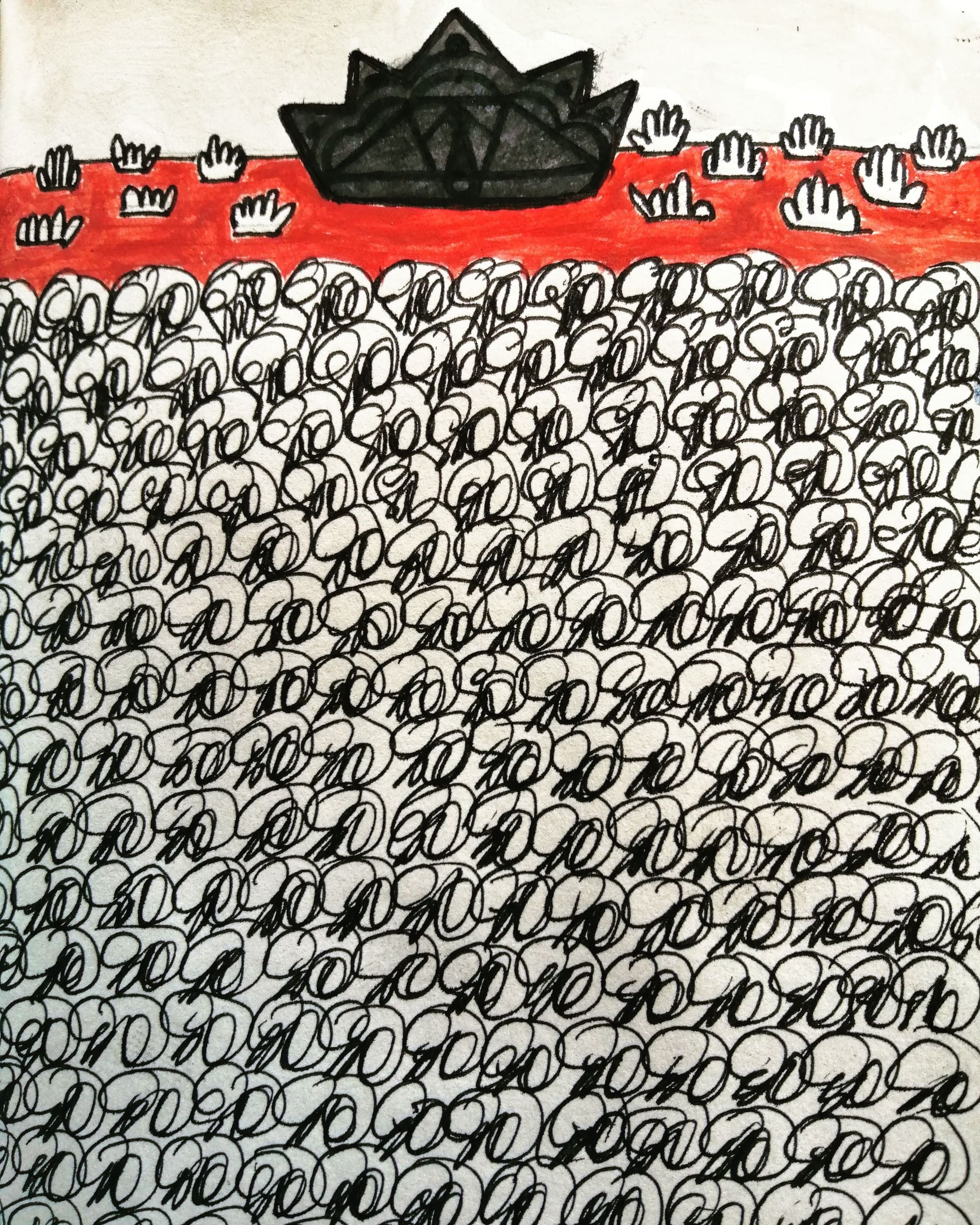1. Artistic residencies
Roser Bru was born in Barcelona in 1923. Javier Zamora was born in Havana in 1980. 57 years and more than 8,000 km separate these two lives that share so much and at the same time are so different. Art as a refuge and a way of escape from forced migrations.
Barcelona, 1923
Roser Bru Llop was born in 1923, in Barcelona. Daughter of the housewife Josepa Llop and the politician Lluís Bru. Lluís Bru was always very committed politically, he was a founder of the Catalanist organization Joventut Nacionalista La Falç, which would later become part of Esquerra Republicana de Catalunya.
[To learn more about the figure and work of Roser Bru you can visit the website of the Roser Bru Foundation]
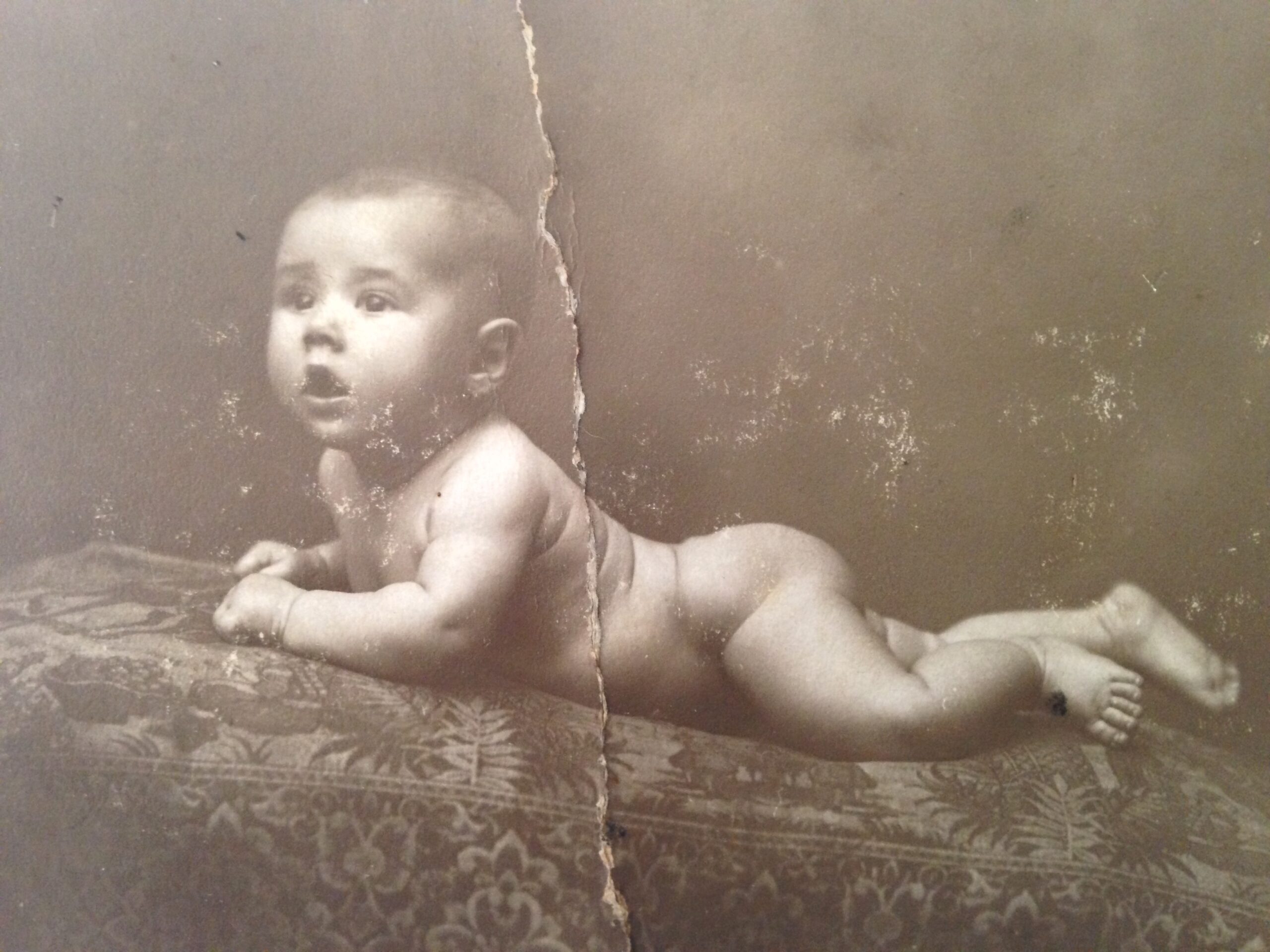
Roser Bru when she was a baby / Roser Bru Foundation
First exile in Paris
A few months after her birth, Roser lived her first exile. Her father, Lluís Bru, was accused of a crime against the homeland because of his political activity. When Roser was just a baby, the family decided to move to Paris to avoid her father’s imprisonment. The exile in Paris lasted until almost the end of Primo de Rivera’s dictatorship.
Return to Barcelona
In 1928, back in Barcelona, the father Bru continues his political activity. One spring day in 1931 he arrives home very excited announcing that the Catalan Republic has been proclaimed.
During the republican period, Roser studied at the Institut Escola, a center that was committed to an integral and secular humanist education. Bru’s love for drawing was born at the Institut Escola, where she began to draw at a very young age.
When the war broke out, Roser was only 13 years old. This event would mark her life and her work.
The imprint of the war
Throughout her life Bru created several works referring to the Spanish Civil War. One of the most repeated images was the reproduction in different formats of Robert Capa’s photograph «The Falling Soldier».
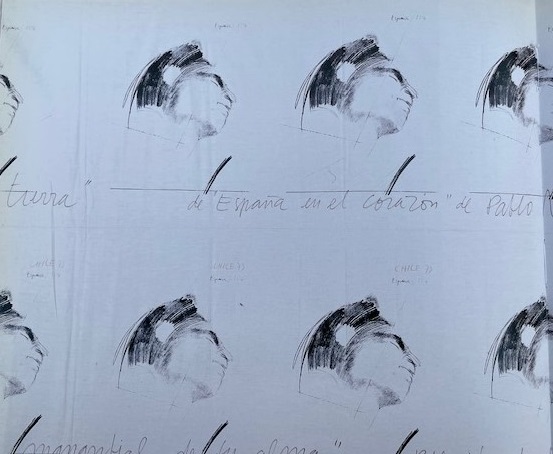
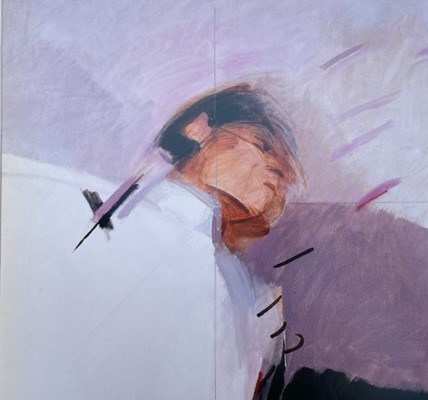
A few months in Montpellier
At the end of the war the whole Bru Llop family crossed the border to France. Roser and her sister Montserrat would go to a Quaker-run center in Montpellier while their parents went to Paris, from where they looked for places for people to go into exile.
Objects of exile
Objects keep the memory alive. Roser Bru kept the suitcase with which she left Barcelona and a letter that Lluís Bru sent to his daughters while he was in Paris and they were in Montpellier.
Arrival in Chile
The Bru family met again to board the Winnipeg on its way to Chile. The Winnipeg left Pauillac on August 4th and arrived in Valparaiso in early September (See 80th anniversary video).
Once in Chile, the Bru’s took a train to Santiago, where they would establish their residence. Roser, like the whole family, began to work and immediately entered the School of Fine Arts at the University of Chile. With her studies she began to integrate more quickly, although she married very young and at the age of 20 she had already had her first daughter, so she had to face the difficulty of combining study, work and motherhood.
Her father, Lluís Bru, was diagnosed with tuberculosis shortly after his arrival. The Catalan politician died in 1945, it was a terrible time for Roser.
Roser was always very connected to the Catalan Center of Santiago de Chile and very close to the local intellectuality and the republican exile.
The ghost of the return
At the end of the 1950s, Bru had her whole life in Chile, where she worked as an art teacher at the Catholic University and was already a renowned artist. She would dream of returning to Barcelona and strolling through the places that had marked her childhood.
In 1958 she managed, for the first time in almost 20 years, to go to Catalonia. The surprise was when she was about to return to Chile and the authorities would not let her leave. She finally succeeded and soon after obtained Chilean nationality.
From that moment on, her comings and goings to Catalonia were constant. The Aguadé Bru couple considered several times to return to live in Barcelona, but the decision was very difficult. They were already established in Chile and it would have been like a new exile. Their daughters did not want to leave. At that time, Barcelona, in the midst of Franco’s regime, seemed terrible to them compared to Chile.
They made some attempts to establish themselves in Spain, they built a space in Ibiza, but they always ended up returning. Even so, Bru began to make exhibitions in the Catalan capital, spending long periods in her homeland.
On both sides of the ocean
Almost 20 years passed since Bru crossed the Atlantic on the Winnipeg to Chile until she was able to set foot on her native land again. Since then there were many trips. In the photo on the left we see Bru with her daughter Agna in Ibiza, in the one on the right an exhibition at the Museo de Bellas Artes in Santiago.
The inner struggle
The years went by and, suddenly, that feeling that history was repeating all over again. The Popular Unity government, headed by Allende, was overthrown by a military coup d’état. Augusto Pinochet took power. Roser Bru decided to stay in Chile and resist from within, but her two daughters went into exile: Tessa, the eldest, went to Barcelona, Agna, the youngest, to Paris.
Bru’s work begins to be very marked by the political events in Chile. Her production is very prolific, she has a constant need to communicate.
After Pinochet’s nightmare, the Catalan-Chilean artist would see her work officially recognized with various awards, including the Pablo Neruda Order of Artistic and Cultural Merit (Chile, 2005), the National Plastic Arts Award (Chile, 2015), the Gold Medal for Merit in Fine Arts (Spain, 2018) and the Creu de Sant Jordi (Catalonia, 2020). Roser Bru passed away in May 2021 in the land that welcomed her. Her granddaughter Amalá has brought her life and her work to the theater in the project Bru o el exilio de la memoria (Bru or the exile of memory).
Political events in Chile
On the left, an exhibition of posters created by Roser Bru against the Pinochet dictatorship. On the right, the artist with former Chilean President Michelle Bachelet at the inauguration of the exhibition “4 National Awards”, one of Bru’s last public events.
Havana
I am Javier Zamora, I was born in Havana, Cuba, in 1980. In 2012, shortly after the murder of a friend, I presented my graduation thesis at the San Alejandro National Academy of Fine Arts. My thesis was about violence. At that time I was in an internal struggle between research and work.
Graduation thesis
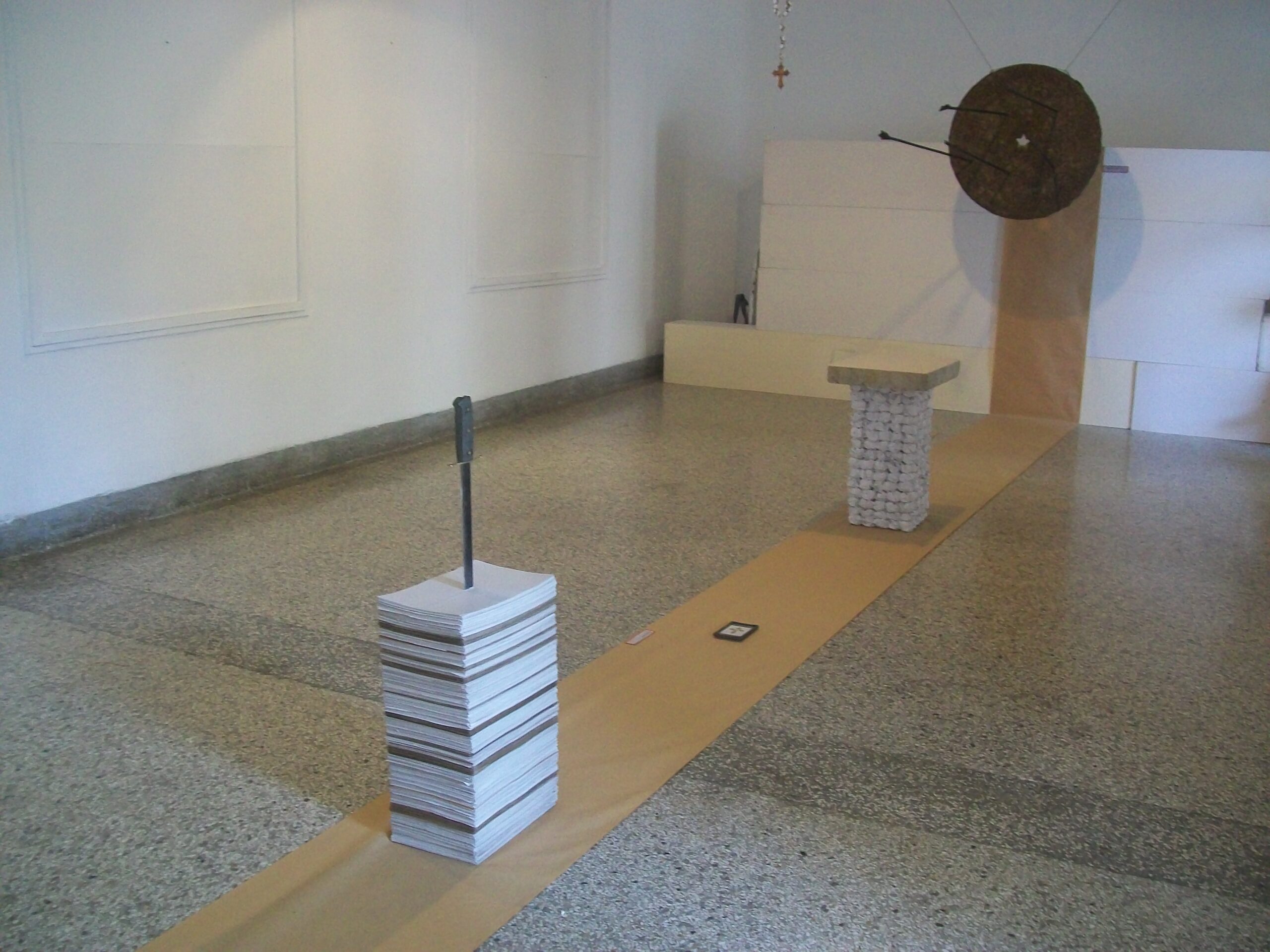
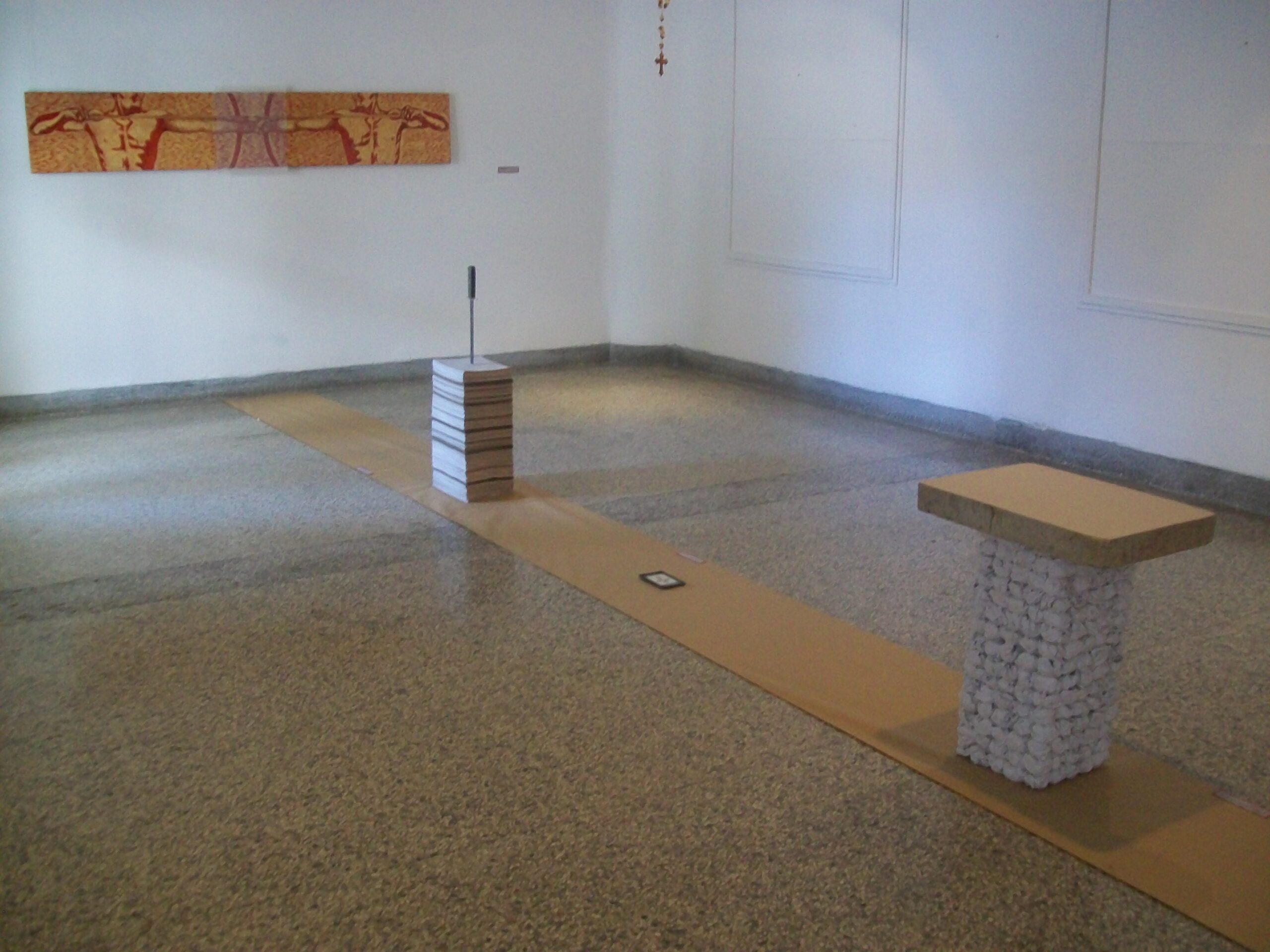
El Salvador
In Cuba I met a Salvadoran woman, we got married and went to El Salvador. I thought it was not for political reasons, just the need to improve myself, because I was not directly confronted with the regime. My spouse went back to Cuba to finish her studies.
I see myself in El Salvador, alone with my 4 year old son. Alone? Well, no, there were my in-laws who were a vital support. Extremely important. In the middle of the household chores there was always art. Otherwise I would go crazy.
I would cut papers into 12 pieces and while I was doing housework I would doodle. It became an exercise. After a few days I realized the gesture I was reproducing, I ended up seeing that they were heads and I thought it was my own, because of the mess I had in my head.
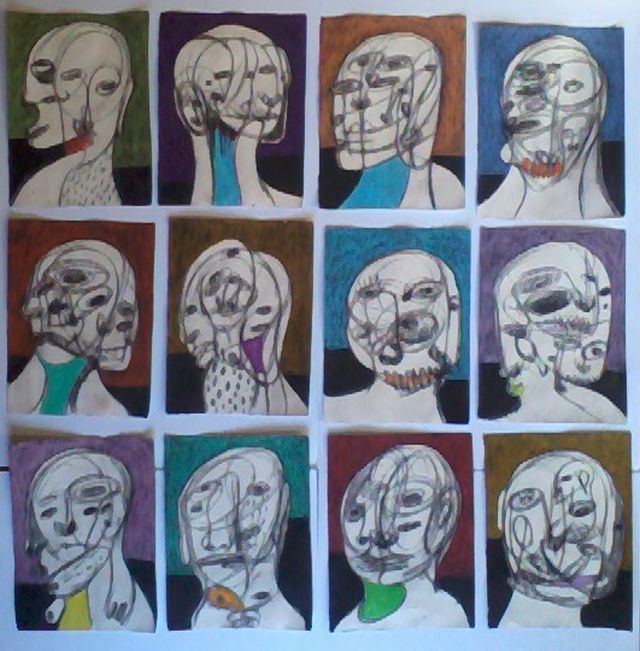
Twelve pieces of paper from the series ” I just know it’s me” / Javier Zamora
Havana, sheltering the family
In 2014 my wife and son were assaulted, life in El Salvador was dangerous and we decided to have them go to Cuba. I accompanied them and returned to El Salvador. Then it was already clear to us that we wanted to come to Spain. The challenge was to get a scholarship to go and exhibit there. At that time I spent many hours in the car.
Back to El Salvador
With the family in Havana, I started a series of photographs, “Desde adentro”. On the street you see a lot of things, I was always driving and at traffic lights I tried to capture the image of the kids coming up to wash your window. Some of them were my son’s age. I would take pictures to take home and then make the engraving. Sometimes I would get caught.

From Inside
Objects in the mirror are closer than they appear.
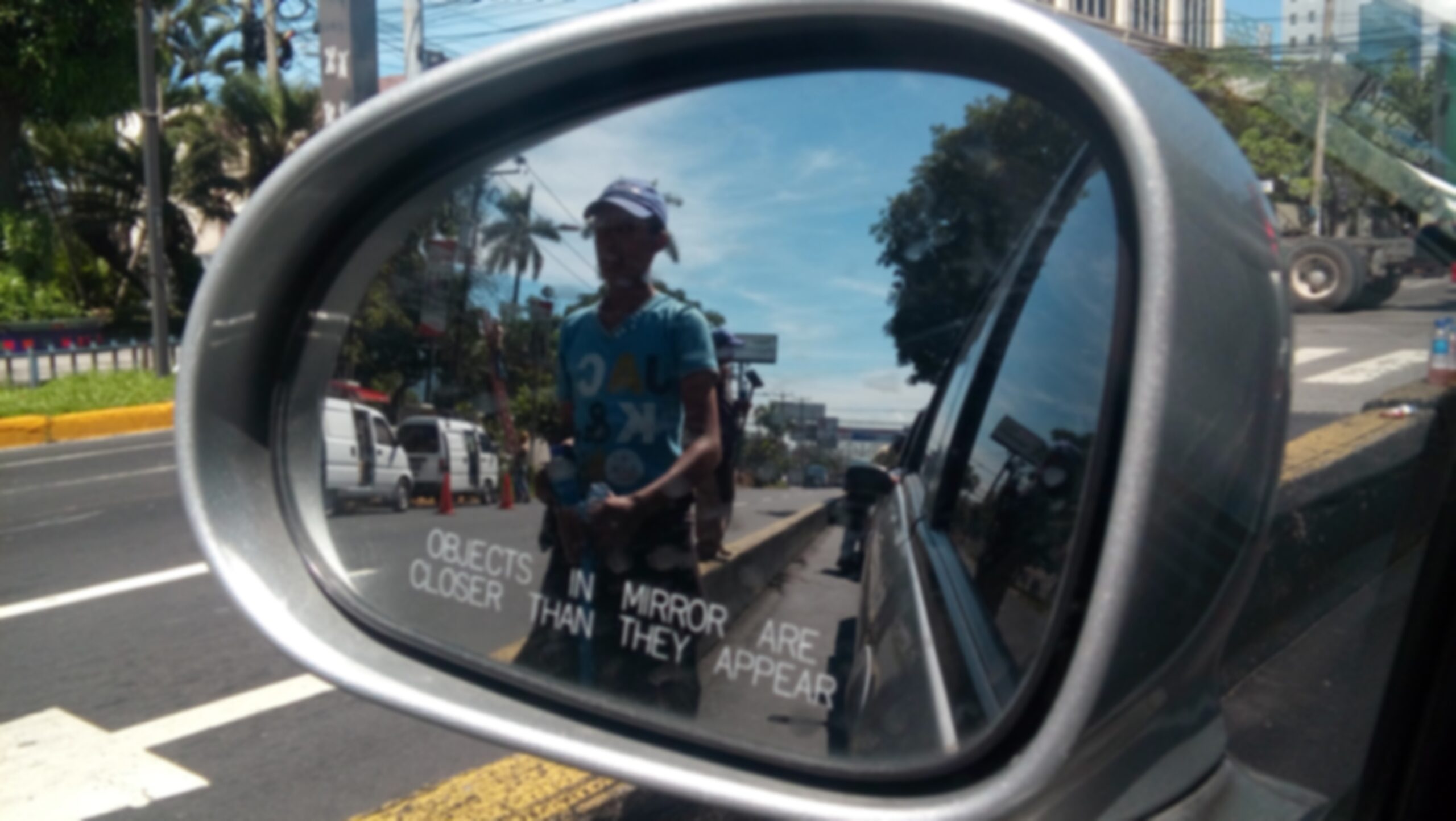
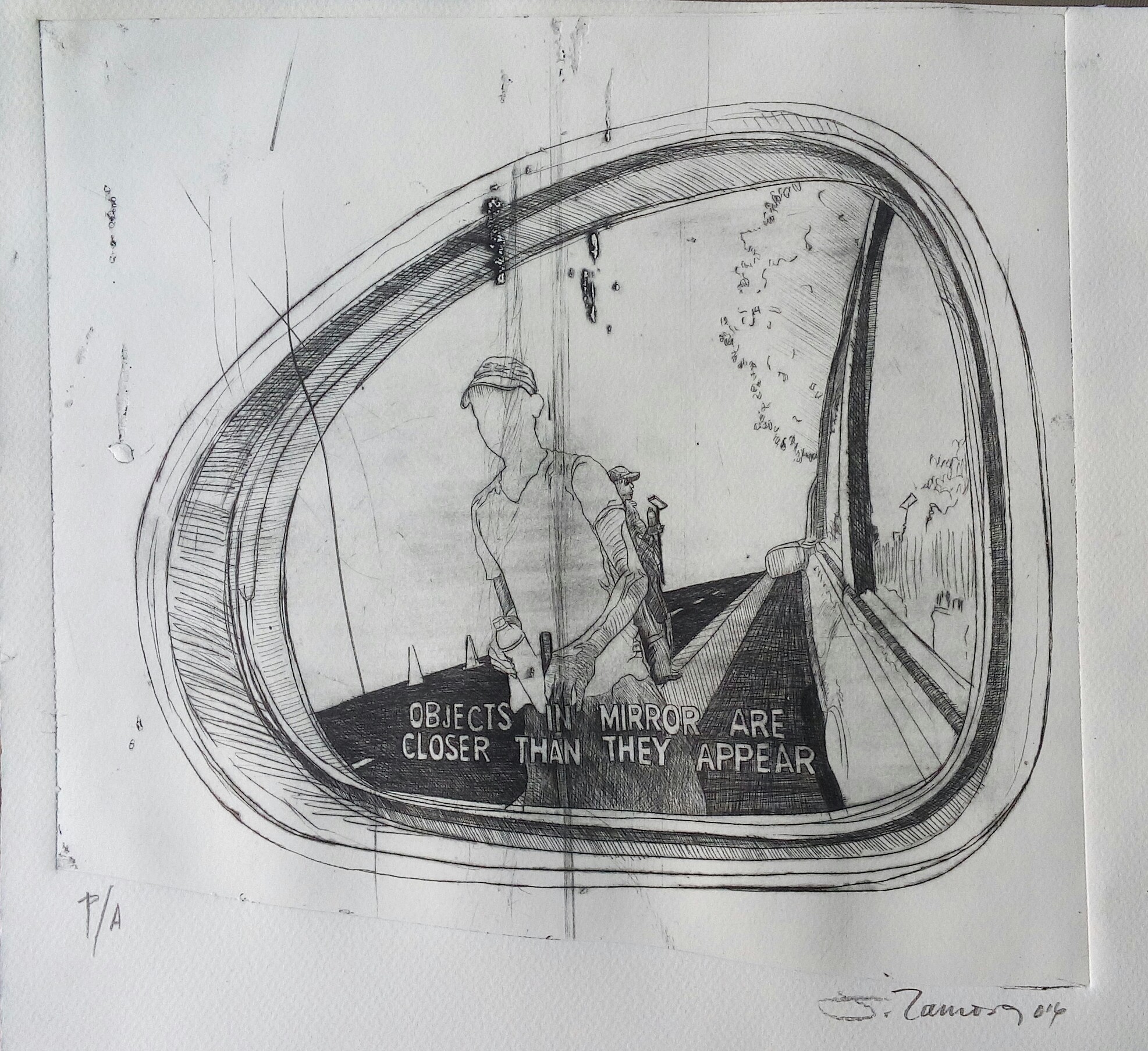
Jaén
In 2016 I come to Spain for the first time. I was selected for the project Abierto por Arte to make artistic creations in the middle of nature. There I made a series of sculptures, “Núcleo”, it was a representation of our family on a human scale in a field of olive trees. There was my wife, my son, my dog and I, represented by skewers of olives. It was like coming to be planted here.
It gave me a self-confidence that I can’t explain. I felt like a superhero. I felt like SuperJavier.
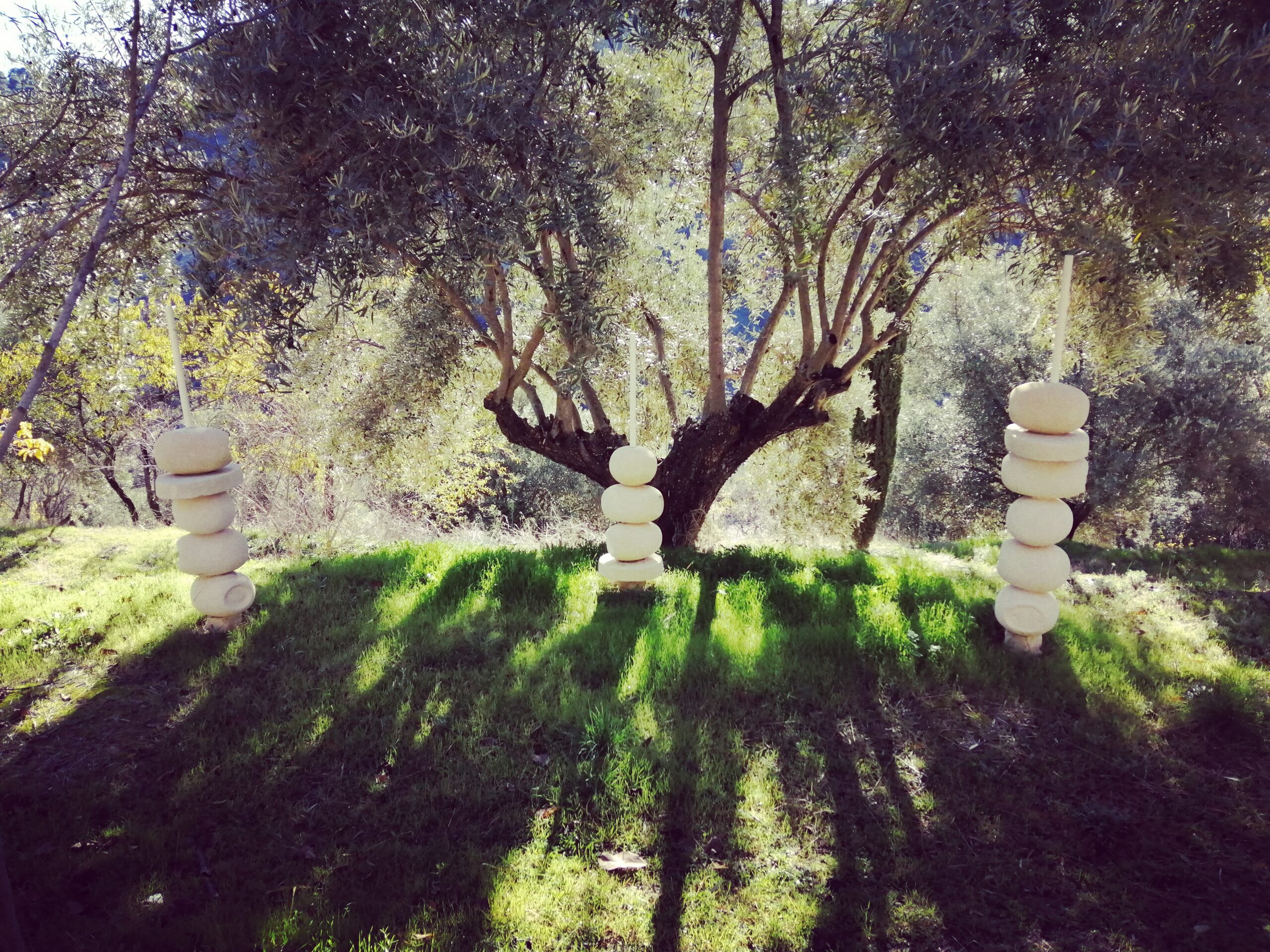
Nucleus / Javier Zamora
El Salvador, the Crossing
I came with the idea of doing things correctly. I left with a lot of enthusiasm.
When I came back I started applying for scholarships, it was like a sport. From then on, that was the thousand percent of the plan. I saw, I tasted, I smelled, I know… Jaén reminded me of Havana.
While I’m applying for scholarships, I’m invited to make the set for a movie. It’s a low-budget film, made by left-wing people. I was excited to make movies without knowing. I had to make the place look like a shelter for migrants, it was community cinema, the kids helped me paint it and make the scenery.
The film is called “La Travesía” (The Crossing).
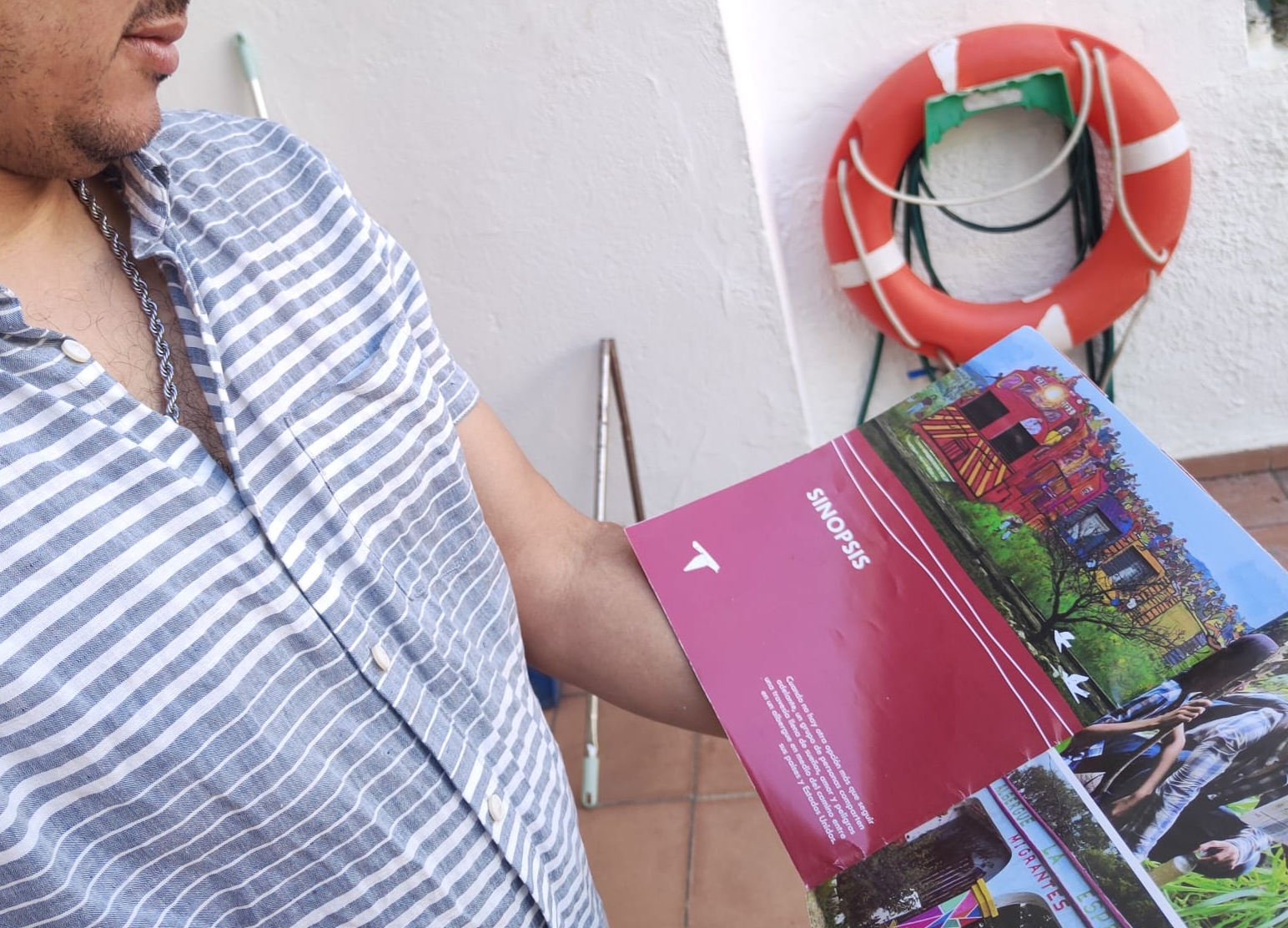
Javier with the magazine of the movie “La Travesía” in which his scenery appears. / MUME
El Bruc
At the end of 2017, on December 1st, I arrive in Catalonia, in El Bruc. I came with a printmaking project that consisted of representing life in artistic residencies, within the framework of the Can Serrat International Art Residency.
At the Bruc I began to realize the bureaucratic difficulty. My new series would be called “Funcionarios” (Public Officials).
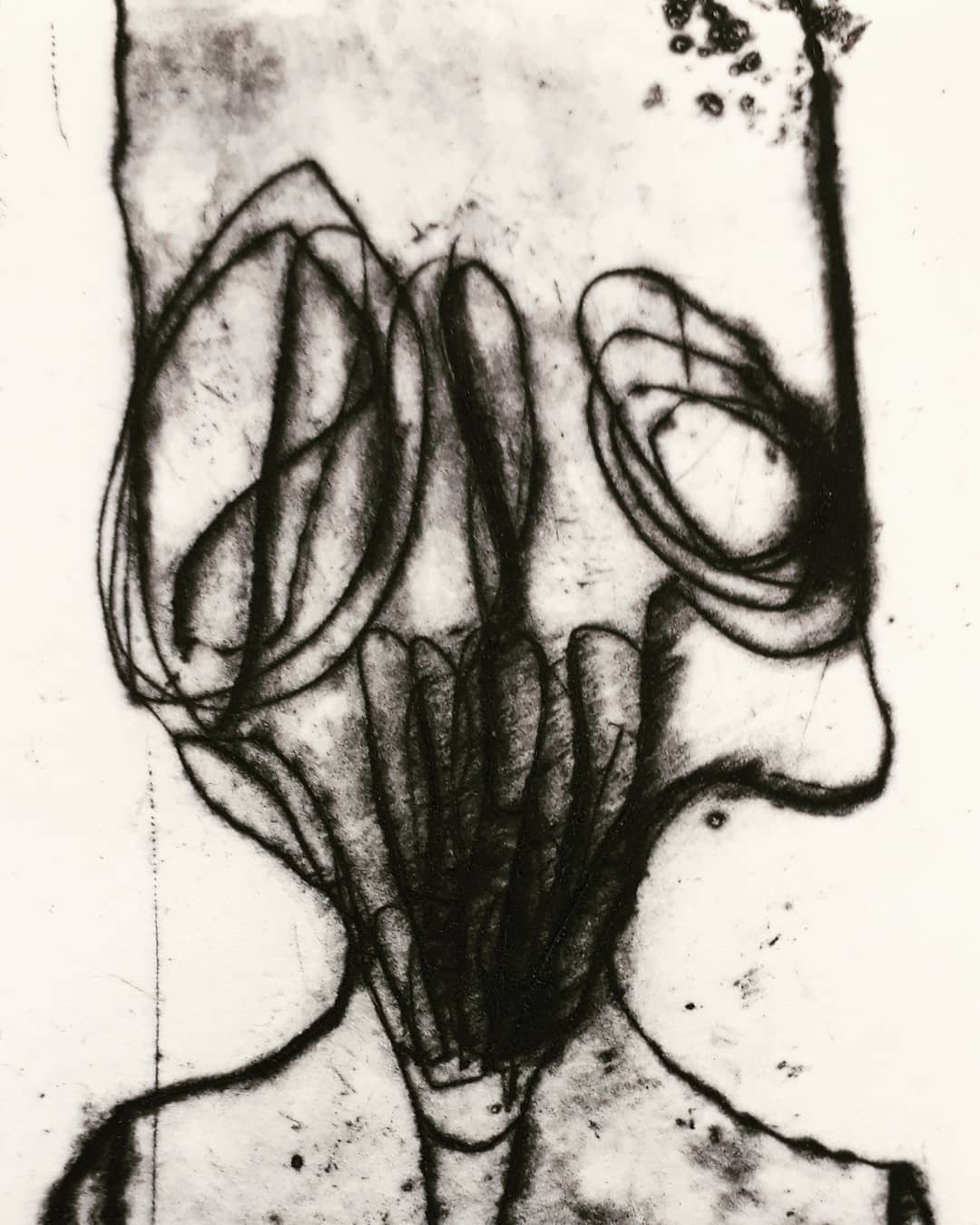
Public Official Number One / Javier Zamora
Madrid
When I finish at the Bruc I go to Madrid, I almost go back to El Salvador, it would have been a tremendous mistake. In Madrid I discover CEAR and I see the difficulty of my challenge. Between pride and dignity I said I didn’t want to do it, that I would go back to El Salvador and go to the USA, which is what I had always been told to do.
A friend insisted me a lot. One day he asked me what I would tell my son when he asked me “why am I not in Spain?”. There I saw that I had to stick to my plan.
Then I joined an NGO, I worked in exchange for food and a house in a car wash. There I was also accompanied by art, I started to play with water, to paint the place.
Jaén, to complex problems
I left Madrid and returned to Andalusia, passing through Granada and then Jaén, where I returned to participate in Abierto por Arte. There I worked for the first time in olives.
I started a series, it was called “A problemas complejos”, sinister characters, with ties, on rafts in the sea. I want to invert things, that those who generate that violence are the ones who go on the patera.
My wife and son arrived and it was a time of many movements between Catalonia and Andalusia. I alternated jobs as a waiter and in the olives.
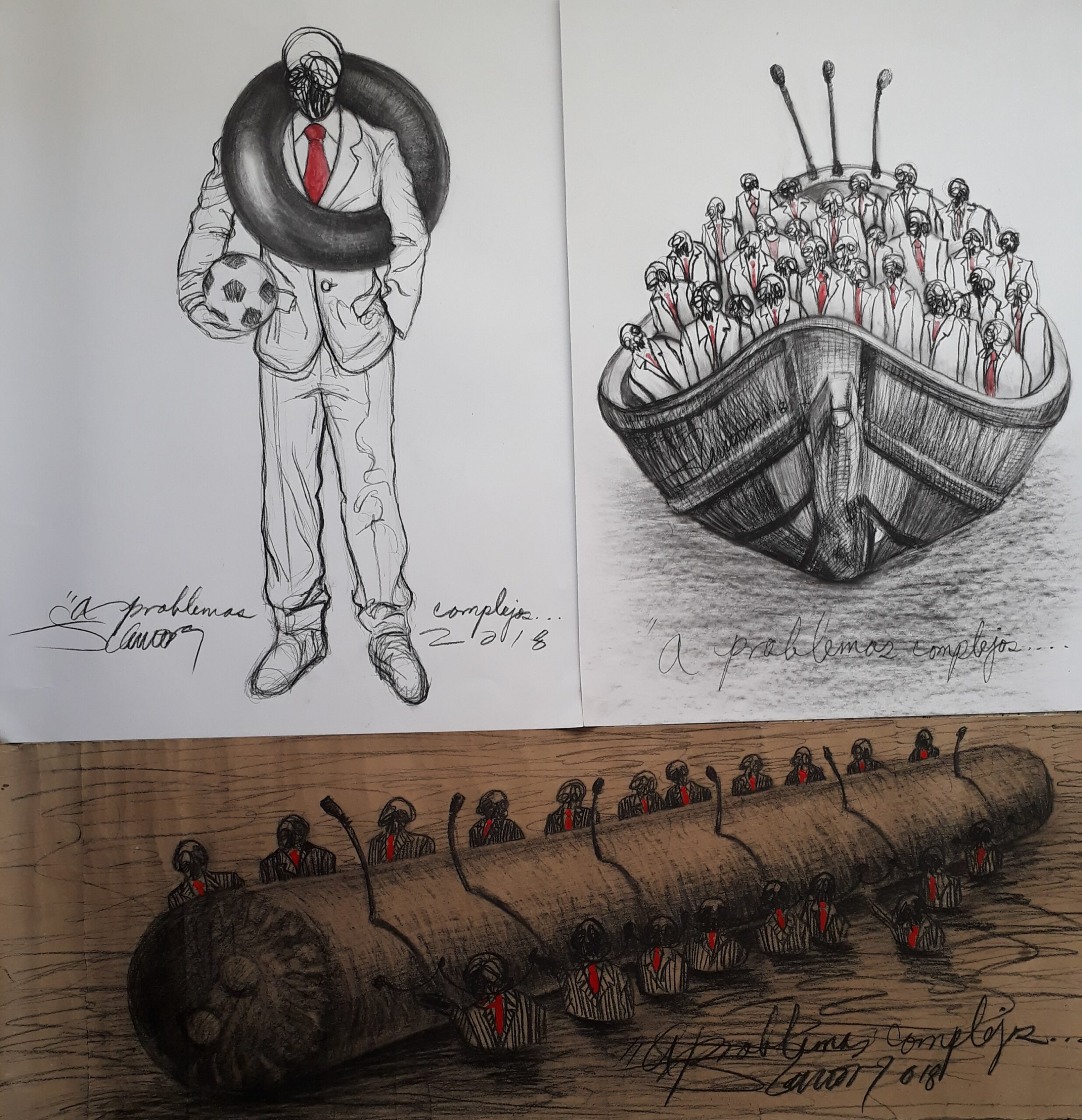
Series “To complex problems” / Javier Zamora
Setcases
My wife got a job in a ski resort, working seven days a week. When I finished the olive season, in February 2020, I went to Setcases.
I went down with my son to Igualada, to be near Can Serrat, where projects had arisen that faded away, and Igualada had just been closed by Covid. In my wife’s job they tell her that they are closing the ski resort. In seven days we had to leave Setcases.
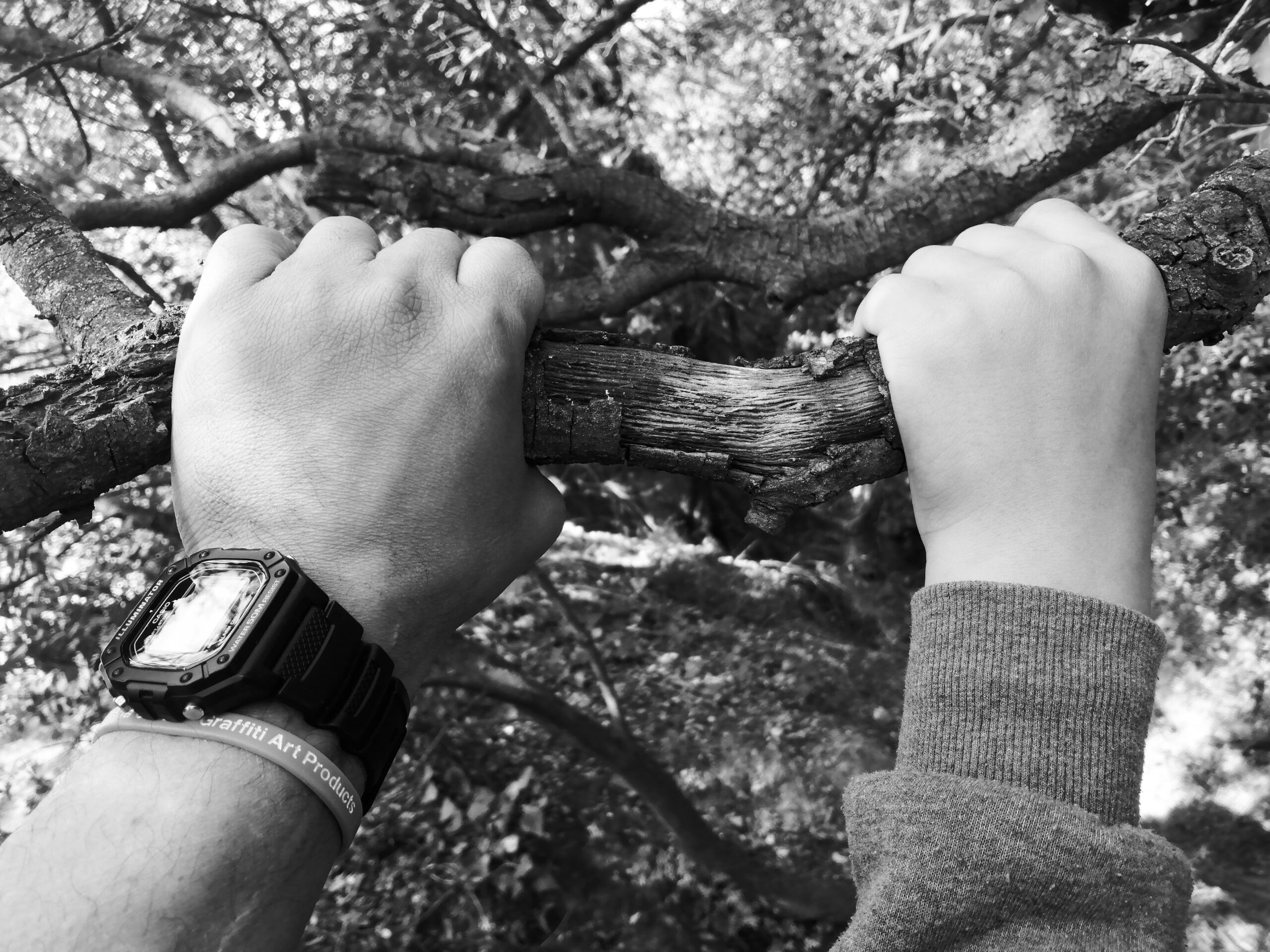
Pandemic: Javier and his son clutching a tree / Javier Zamora
L’Escala
In those first days of the pandemic my wife was looking for a new job, finally she found a job in L’Escala. We arrived here, without knowing anyone, in the middle of the pandemic, alone at home.
For me it was important to go back to the sea, having it so close and not being able to see it for more than a month and a half made the situation even more difficult, I had to see it through the eyes of my wife. Walking along the beach I noticed the things that the sea brings out, I started to take pictures and the Residual Beings series came to me.


